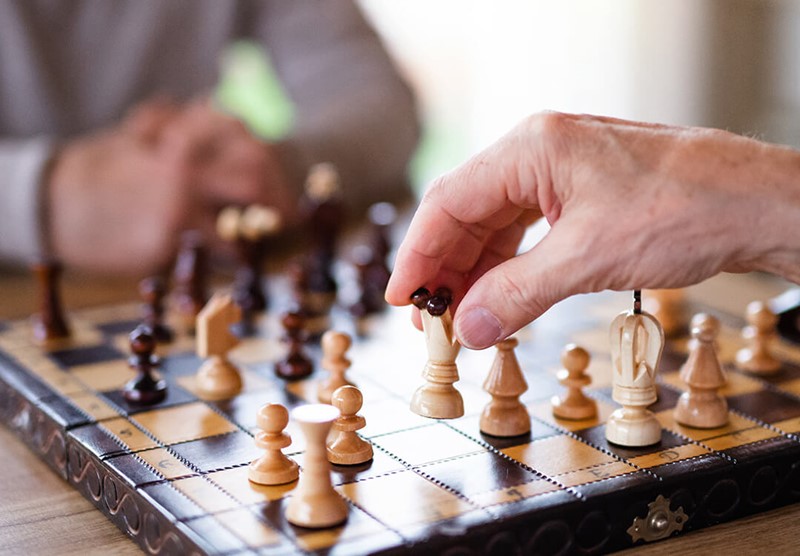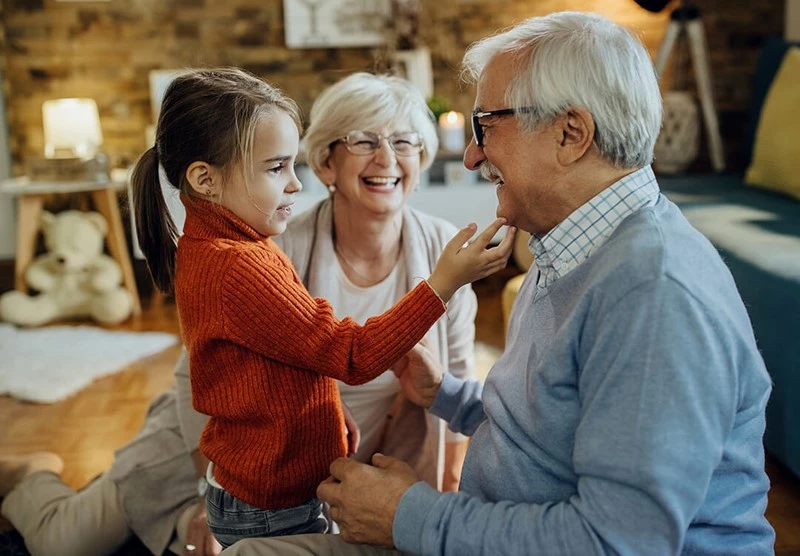Select your country
Websites worldwide
Select a country to go to the website of the respective STADA sales company.
Australia (1)
Austria (1)
Belarus (1)
Belgium (1)
Bosnia-Herzegovina (1)
Bulgaria (1)
China (1)
Croatia (1)
Czech Republic (2)
Denmark (1)
France (1)
Hungary (1)
Ireland (1)
Italy (1)
Montenegro (1)
Netherlands (2)
Poland (1)
Portugal (1)
Romania (1)
Saudi Arabia (1)
Serbia (1)
Slovakia (1)
Slovenia (1)
Spain (1)
Switzerland (1)
Thailand (1)
The Phillippines (1)
United Kingdom (3)
Vietnam (2)
No two Parkinson's diseases are the same: History, symptoms, life situation - all of these differ from patient to patient. What most of them have in common, however, is the treatment path they follow. Where the path begins, i.e. where Parkinson's therapy starts, depends to a large extent on whether the patient is in an early or advanced stage of the disease.
Parkinson's disease: dopamine deficiency in the brain
In people with Parkinson's disease, the nerve cells in the brain that produce the neurotransmitter dopamine die at a greatly increased rate. When sufficient amounts of dopamine are not available to the body, this brings with it limitations in coordination and movement.1 Various treatments can counteract this process by administering drugs that increase the amount of dopamine in the brain.
Isolated Parkinson‘s symptoms can appear a long time before the actual onset of the disease.1 That's why it's important to talk to your doctor about any changes you observe - the earlier, the better. This helps to piece together a picture that the doctor can use to classify symptoms, make a diagnosis if necessary, and decide which type of Parkinson's therapy is most appropriate.
The treatment options for Parkinson's presented here all have one common goal: to enable the patient to lead a self-determined and flexible life in which he or she can master everyday life and continue to enjoy leisure time as unrestrictedly as possible.

The lack of dopamine in the brains of Parkinson's patients can be compensated for in a number of ways - so symptoms such as tremors, muscle stiffness and so on can be alleviated
Option 1: Parkinson therapy with tablets (oral therapy)
For most patients, treatment begins with an oral therapy in which tablets are taken several times a day. There are various active ingredients that can supply the body with dopamine - the doctor decides which of these is the right one based on the patient's age and the severity of the symptoms, for example.
Therapy with the active ingredient levodopa (also: L-dopa), a precursor of dopamine, has so far been considered the "gold standard".2 Levodopa is converted to dopamine in the brain and is then available to the body to regulate muscle coordination. Apart from the need to remember to take tablets several times a day, oral therapy is relatively uncomplicated for patients to integrate into their daily lives. Many patients manage well with oral therapy for years.
However, long-term use of levodopa can lead to the so-called "L-dopa long-term phenomenon", in which uncontrollable movements and cramps occur. Some sufferers are also troubled by the "on-off phenomenon": The term comes from the constant change in the patient's state between body rigidity and freedom of movement, which can affect quality of life.3 To counteract these accompanying symptoms, supplementary oral medications can be taken in combination with levodopa.4
Option 2: Device-based Parkinson's therapy
An extension of oral therapy is so-called device-based therapy. This can be used in addition to tablets, or when treatment with tablets no longer achieves the desired effect.
In device-based therapy, active ingredients are delivered directly to the body using technical aids such as a pump or pen. This is an advantage because it bypasses the route via the stomach, whose function can also be impaired in the course of Parkinson's disease. This in turn can mean that tablets are no longer digested properly and can no longer have a sufficiently symptom-relieving effect.
Modern device-based therapies maximize patients' range of motion and flexibility, and can deliver precisely dosed concentrations of active ingredients to avoid placing unnecessary stress on the body. Device-based therapy can use levodopa as well as the active ingredient apomorphine and various combinations of active ingredients.
Active ingredient pen
An active substance pen, similar to an insulin pen for diabetics, is applied by the patient themselves. If a patient experiences acute symptoms such as muscle tension (rigor) and tremor or is otherwise restricted in his or her freedom of movement, for example in the morning before getting up, the active ingredient can be injected into the upper arm, abdomen or thigh. The symptom-relieving effect occurs within a few minutes.5
Active ingredient pump
When using a pump, the patient is continuously supplied with active ingredients so that a constant level of active ingredients is available to the body. This bypasses the gastric passage so that active ingredients can be permanently absorbed directly into the blood and thus transferred to the brain. Thanks to the increased concentration of active ingredient in the body in this way, the dose of the drug can be reduced in some cases. An active ingredient pump may be suitable for patients in an advanced stage of Parkinson's disease.5

Modern therapy options can also give many freedoms back to patients in an advanced stage of Parkinson's.
Option 3: Device-assisted Parkinson's therapy
Surgical treatment
In some patients with advanced Parkinson's disease, medications in tablet form show no or insufficient effect or are accompanied by side effects that make it necessary to discontinue oral therapy. In these cases, surgical treatment may be considered. In this case, electrodes are implanted in the brain that are connected to a "brain pacemaker" and deliver stimulating electrical impulses (deep brain stimulation). 2 This can support the body functions disturbed by the dopamine deficiency and alleviate symptoms.
Non-drug therapy
Medications in various dosage forms can give Parkinson's patients back a great deal of flexibility and self-determination. But there are also ways to support patients beyond alleviating immediate motor symptoms:
- Physiotherapy
Regular exercise therapy tailored to the individual patient can help Parkinson's patients maintain or even improve their ability to move. This gives them security and can help them cope with everyday life confidently despite the disease.
- Speech therapy
For some Parkinson's patients, the disease affects their ability to speak and swallow. Some affected people no longer have their voice under control as before - this can lead to them feeling ashamed and no longer wanting to participate in social life because they can no longer communicate as usual. Speech therapy, in which breathing, voice and swallowing are specifically trained, can help to counteract this.
- Psychotherapy
Depression, sleep disturbances and changes in libido can be symptoms or concomitants of Parkinson's disease. And of course, the diagnosis itself is a burden for those affected - even though Parkinson's is very treatable today. Regular discussions with a psychotherapist can be very helpful in not piling up feelings of frustration, sadness and insecurity, but giving them a healthy outlet and developing strategies to deal with the new situation and look ahead with strength.
References
1 Deutsche Gesellschaft für Klinische Neurologie und Funktionelle Bildgebung (DGKN). Morbus Parkinson. Online: https://dgkn.de/neurophysiologie/der-ueberblick/morbus-parkinson. As of 19 March 2021.
2 Leitlinien für Diagnostik und Therapie in der Neurologie Idiopathisches Parkinson-Syndrom Kurzversion.
3 www.parkinson-portal.at/parkinson-behandeln/#fortgeschrittene-therapie
4 Deutsche Gesellschaft für Parkinson und Bewegungsstörungen e. V. Hintergrundinformationen Parkinson-Krankheit. Online: https://www.parkinson-gesellschaft.de/die-dpg/morbus-parkinson.html?jjj=1615464405888. As of 19 March 2021.
5 www.parkinson-portal.at


